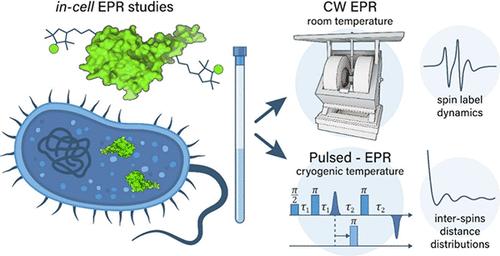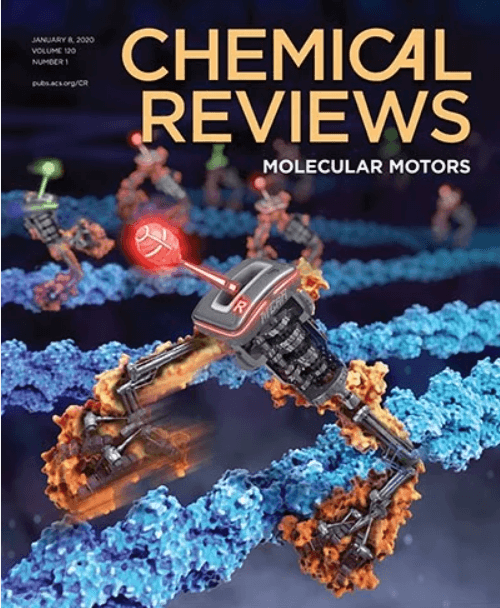利用 EPR 光谱研究细胞拥挤对蛋白质结构动力学的影响
IF 51.4
1区 化学
Q1 CHEMISTRY, MULTIDISCIPLINARY
引用次数: 0
摘要
研究细胞内介质如何影响蛋白质结构动力学和蛋白质之间的相互作用,是科学家们旨在了解生物大分子在其原生环境中的情况的一个令人着迷的研究领域。由于细胞环境很难在体外再现,直接研究细胞内的生物大分子在过去二十年中引起了越来越多的兴趣。在磁共振中,位点定向自旋标记耦合电子顺磁共振波谱(SDSL-EPR)已成为直接研究细胞内生物大分子结构特性的有力工具。自 2010 年首次报道细胞内 EPR 实验以来,已经取得了长足的进步,本综述详细概述了这一光谱技术的发展和应用。将讨论制备细胞样本的可用策略以及可应用于细胞的 EPR 方法。此外,还将介绍一系列可用的自旋标签及其在细胞环境中的优缺点。几个例子将说明如何将细胞内 EPR 应用于不同的生物系统,以及细胞环境如何影响不同蛋白质的结构和动态特性。最后,本综述将重点介绍未来的发展,预计这些发展将扩大这一前景广阔的技术的能力。本文章由计算机程序翻译,如有差异,请以英文原文为准。

Impact of Cellular Crowding on Protein Structural Dynamics Investigated by EPR Spectroscopy
The study of how the intracellular medium influences protein structural dynamics and protein–protein interactions is a captivating area of research for scientists aiming to comprehend biomolecules in their native environment. As the cellular environment can hardly be reproduced in vitro, direct investigation of biomolecules within cells has attracted growing interest in the past two decades. Among magnetic resonances, site-directed spin labeling coupled to electron paramagnetic resonance spectroscopy (SDSL-EPR) has emerged as a powerful tool for studying the structural properties of biomolecules directly in cells. Since the first in-cell EPR experiment was reported in 2010, substantial progress has been made, and this Review provides a detailed overview of the developments and applications of this spectroscopic technique. The strategies available for preparing a cellular sample and the EPR methods that can be applied to cells will be discussed. The array of spin labels available, along with their strengths and weaknesses in cellular contexts, will also be described. Several examples will illustrate how in-cell EPR can be applied to different biological systems and how the cellular environment affects the structural and dynamic properties of different proteins. Lastly, the Review will focus on the future developments expected to expand the capabilities of this promising technique.
求助全文
通过发布文献求助,成功后即可免费获取论文全文。
去求助
来源期刊

Chemical Reviews
化学-化学综合
CiteScore
106.00
自引率
1.10%
发文量
278
审稿时长
4.3 months
期刊介绍:
Chemical Reviews is a highly regarded and highest-ranked journal covering the general topic of chemistry. Its mission is to provide comprehensive, authoritative, critical, and readable reviews of important recent research in organic, inorganic, physical, analytical, theoretical, and biological chemistry.
Since 1985, Chemical Reviews has also published periodic thematic issues that focus on a single theme or direction of emerging research.
 求助内容:
求助内容: 应助结果提醒方式:
应助结果提醒方式:


